Feb 24th, 2025
CMS-HIG-23-011
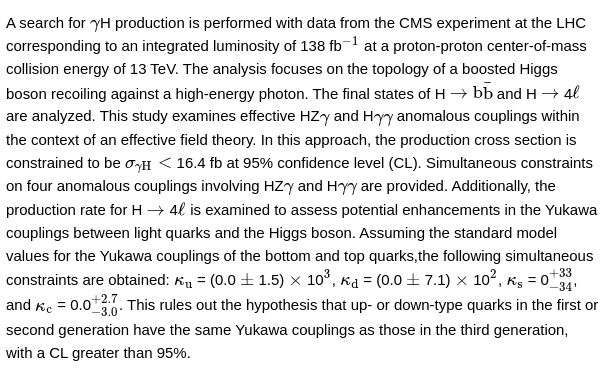

CMS-SUS-24-001
A search for beyond-the-standard-model neutral Higgs bosons in final states with bottom quarks is performed with the CMS detector. The data were recorded in proton-proton collisions at a centre-of-mass energy of 13 TeV at the CERN LHC, and correspond to an integrated luminosity of 36.7-126.9 fb−1 depending on the probed mass range. No signal above the standard model background expectation is observed. Upper limits on the production cross section times branching fraction are set for Higgs bosons in the mass range of 125-1800 GeV. The results are interpreted in benchmark scenarios of the minimal supersymmetric standard model, as well as suitable classes of two-Higgs-doublet models.
CMS-SUS-24-001
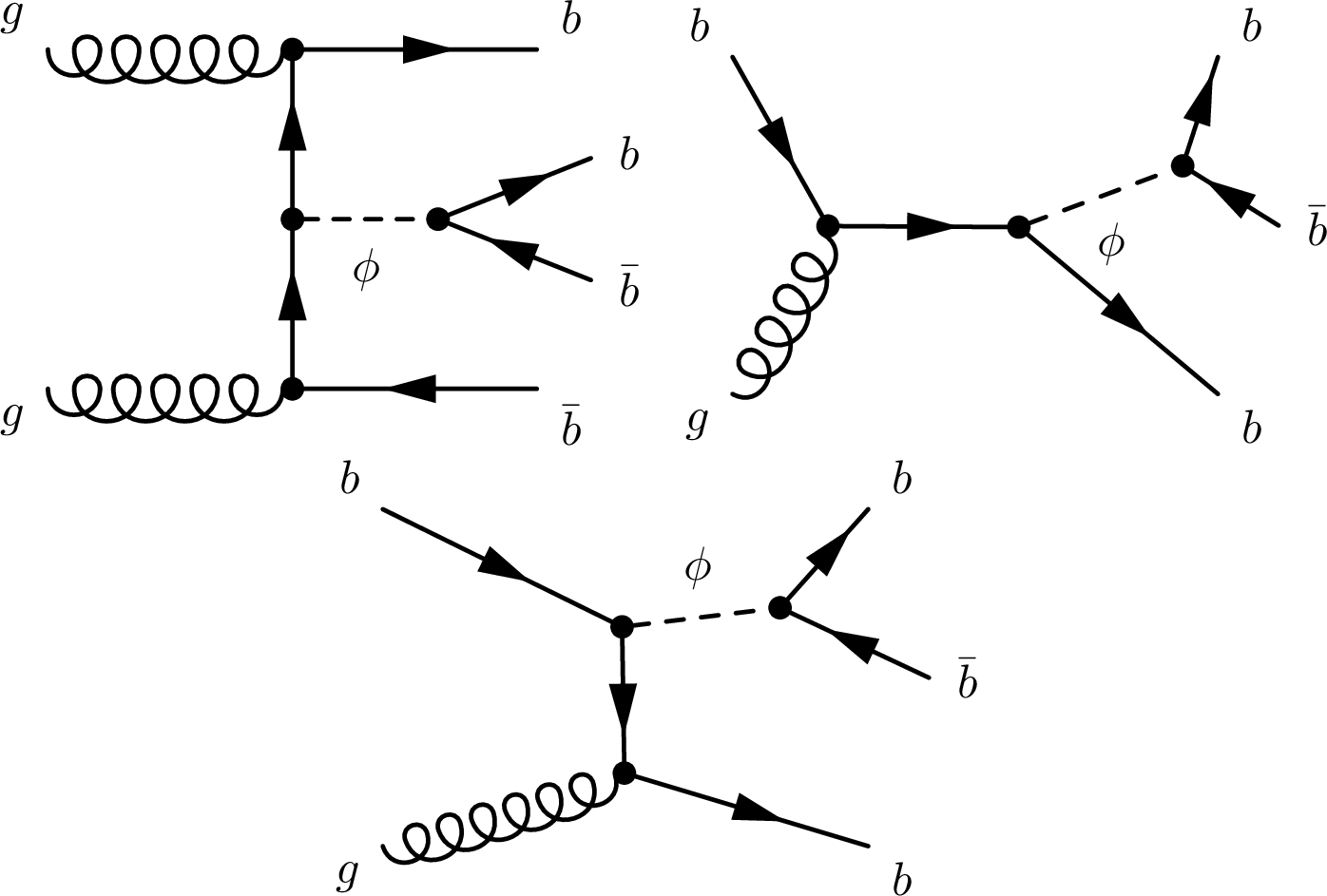
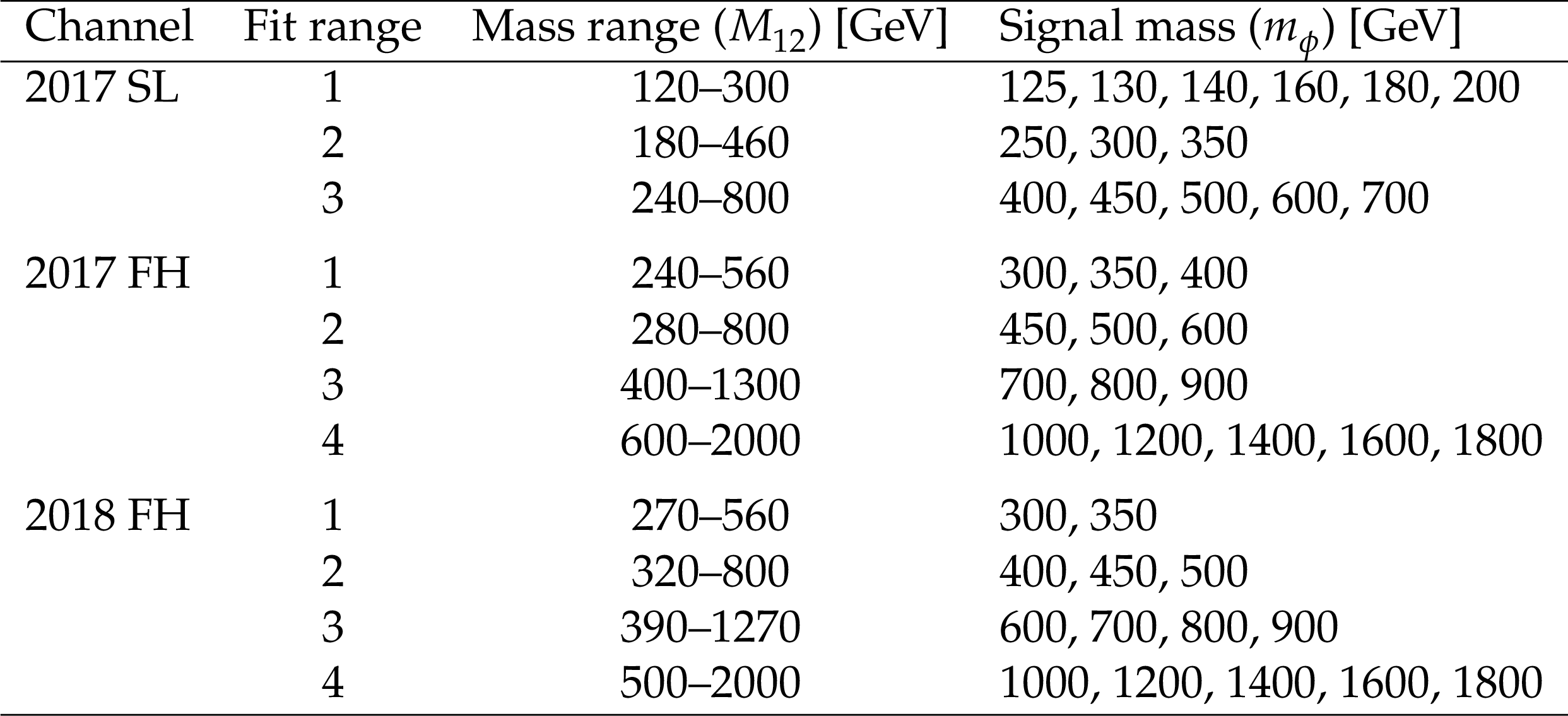
CMS-SUS-24-001
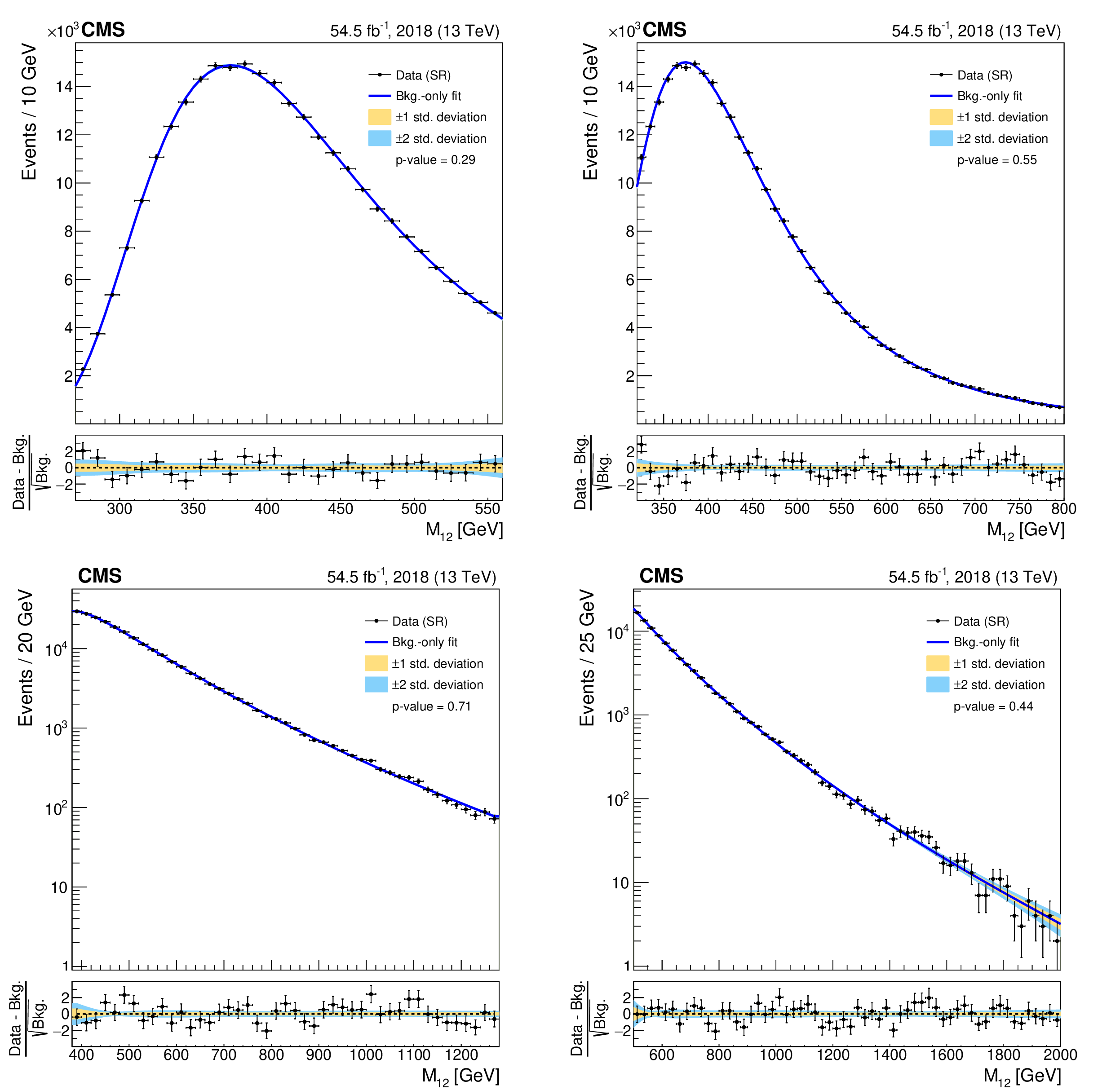
CMS-SUS-24-001
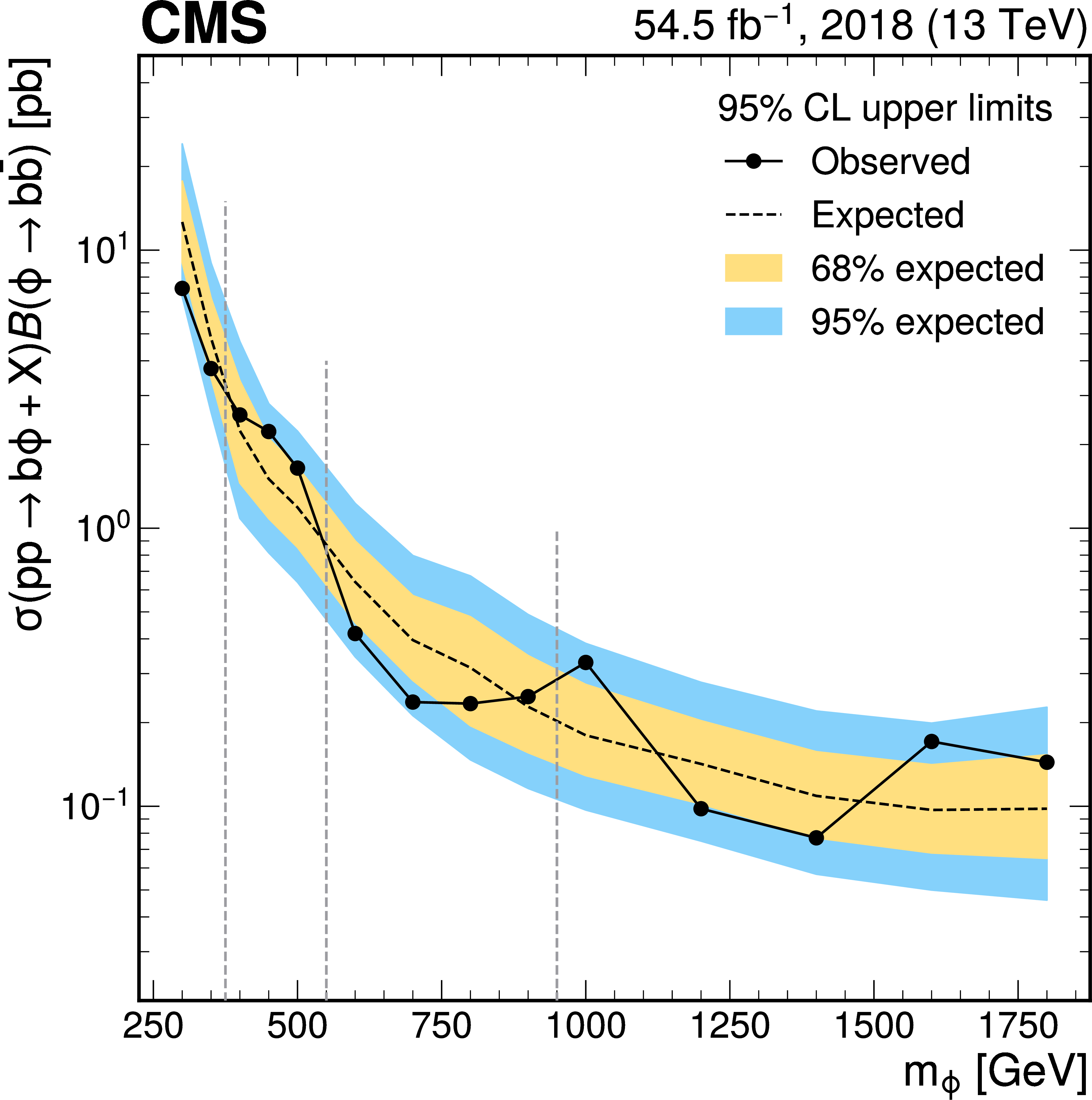
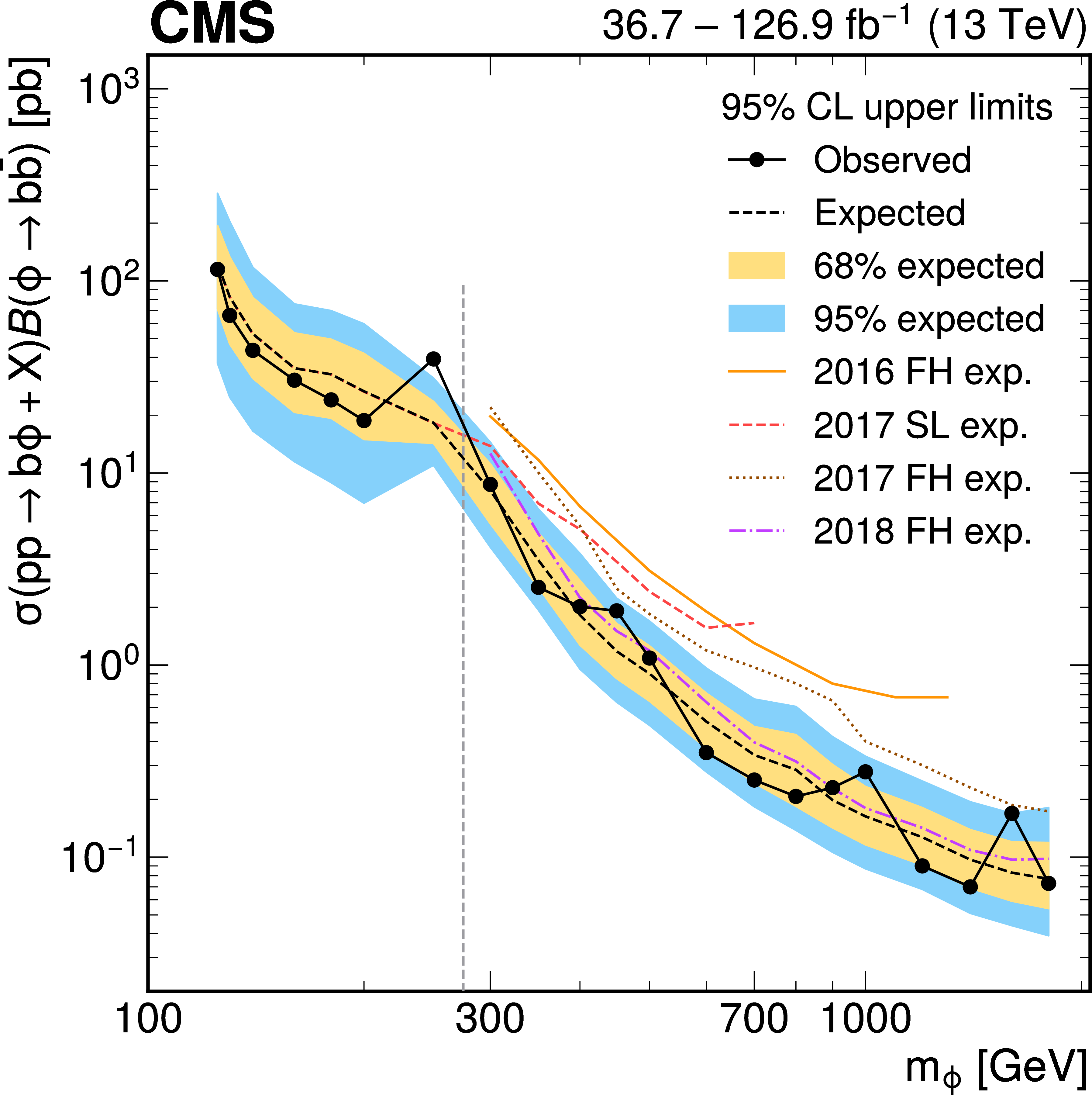
P. Shyamsundar
Negatively weighted events, which appear in the Monte Carlo (MC) simulation of particle collisions, significantly increases the computational resource requirements of current and future collider experiments. This paper introduces and theoretically discusses an MC technique called ARCANE reweighting for reducing or eliminating negatively weighted events. The technique works by redistributing (via an additive reweighting) the contributions of different pathways within an event generator that lead to the same final event. The technique is exact and does not introduce any biases in the distributions of physical observables. A companion paper demonstrates the technique for a physics example.
ATLAS Collab.
This paper presents a search for massive, charged, long-lived particles with the ATLAS detector at the Large Hadron Collider using an integrated luminosity of 140 fb−1 of proton-proton collisions at √s=13 TeV. These particles are expected to move significantly slower than the speed of light. In this paper, two signal regions provide complementary sensitivity. In one region, events are selected with at least one charged-particle track with high transverse momentum, large specific ionisation measured in the pixel detector, and time of flight to the hadronic calorimeter inconsistent with the speed of light. In the other region, events are selected with at least two tracks of opposite charge which both have a high transverse momentum and an anomalously large specific ionisation. The search is sensitive to particles with lifetimes greater than about 3 ns with masses ranging from 200 GeV to 3 TeV. The results are interpreted to set constraints on the supersymmetric pair production of long-lived R-hadrons, charginos and staus, with mass limits extending beyond those from previous searches in broad ranges of lifetime.
ATLAS Collab.
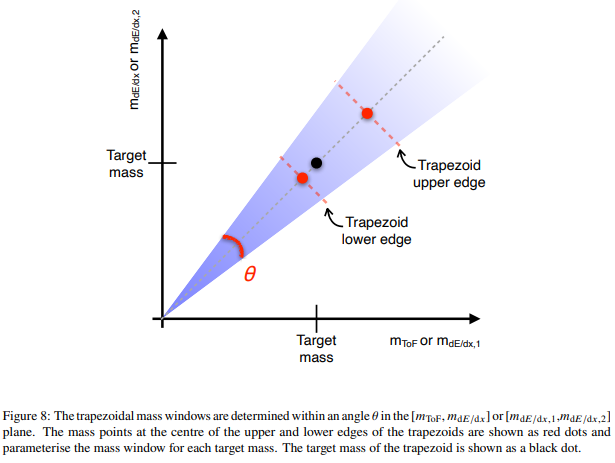
ATLAS Collab.
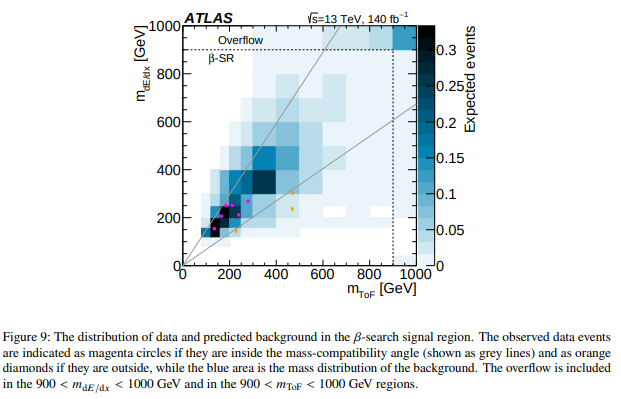

ATLAS Collab.
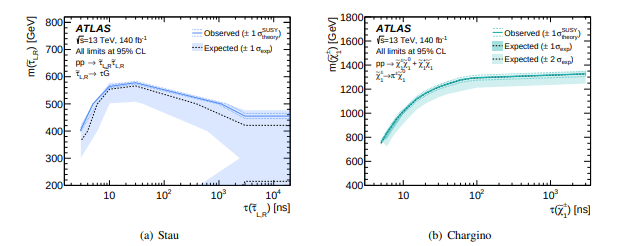
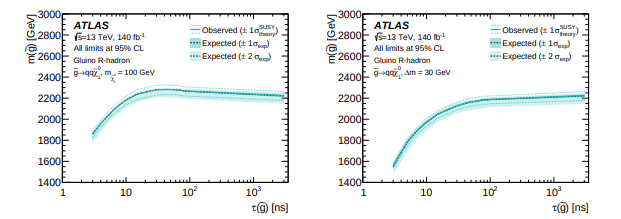
ATLAS Collab.
High precision single-differential W±-boson production cross-sections as a function of electron or muon transverse momentum pT or their pseudorapity η, as well as double-differential cross-sections as functions of these variables, are measured in proton-proton collisions at centre-of-mass energies √s=5.02 TeV and 13 TeV. The W-boson charge asymmetry as a function of lepton η is also measured. The data, collected in dedicated runs at reduced instantaneous luminosity with the ATLAS detector at the Large Hadron Collider, correspond to integrated luminosities of 255 pb−1 at 5.02 TeV and 338 pb−1 at 13 TeV. The measurements are in agreement with Standard-Model predictions calculated at next-to-next-to-leading-order in the strong coupling constant αs including transverse-momentum resummation at next-to-next-to-leading logarithmic accuracy using several parton distribution functions. The impact of the measured differential cross-sections as a function of lepton η on the determination of these functions is studied using a profiling technique.
ATLAS Collab.
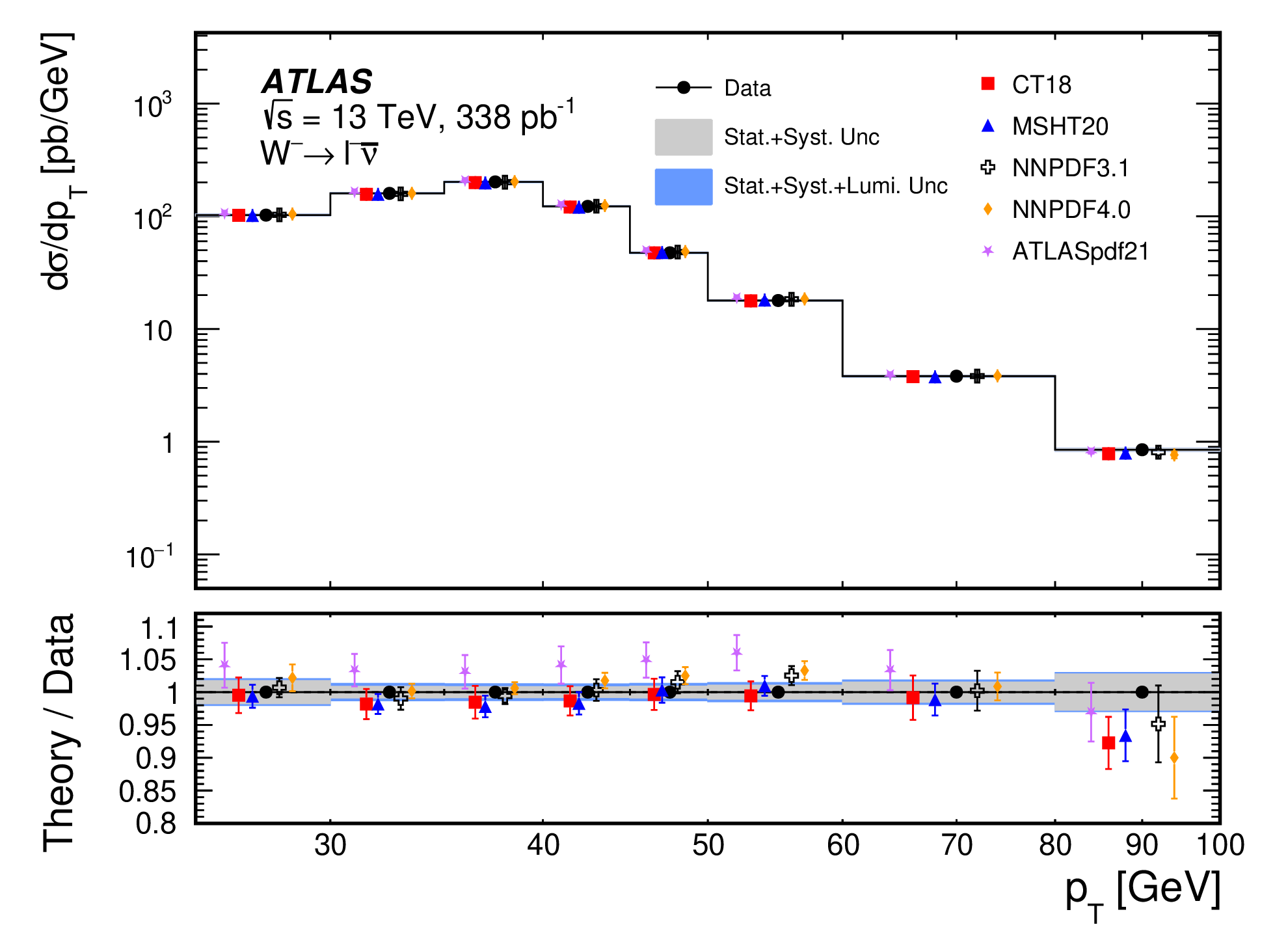
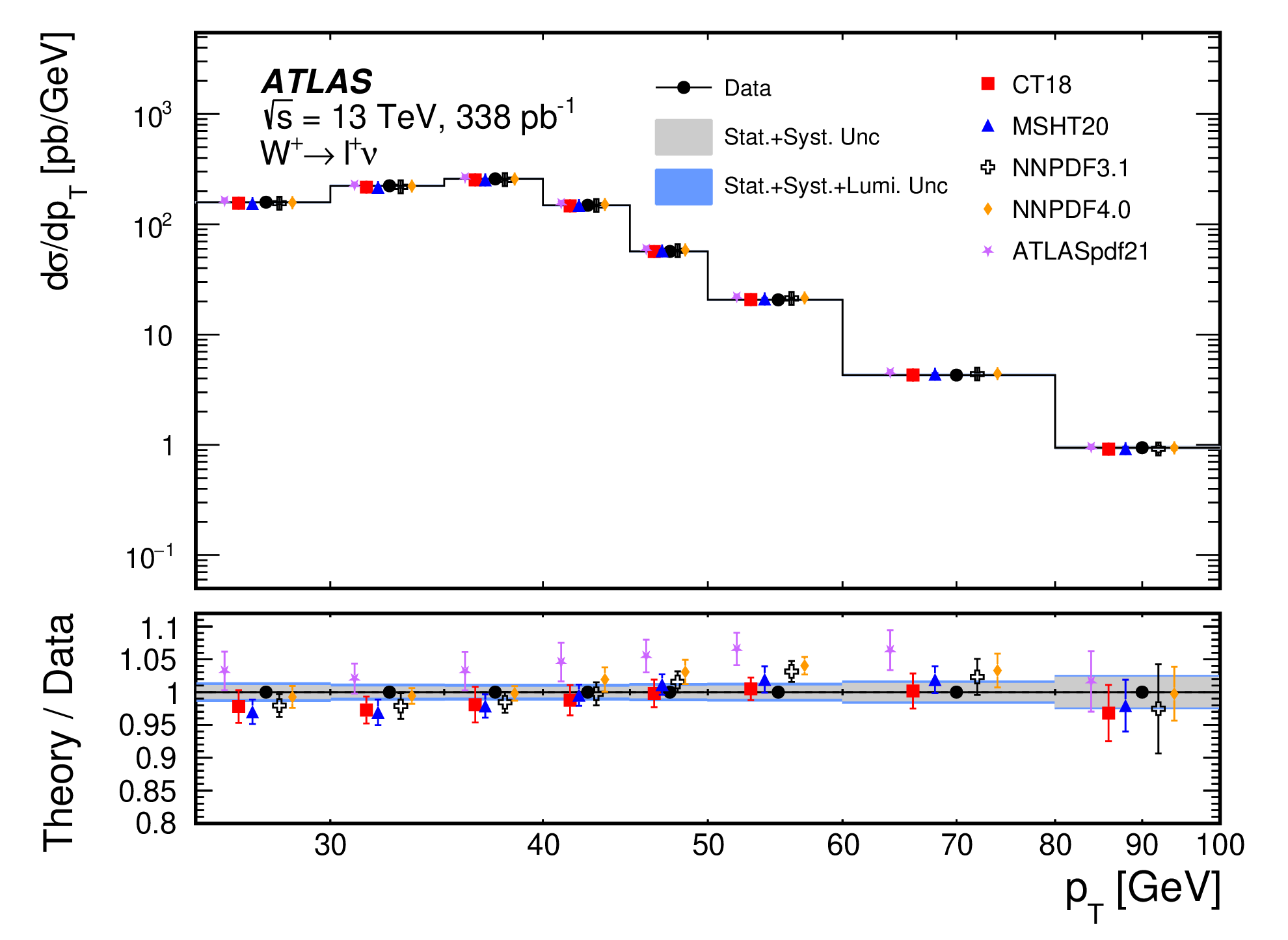
ATLAS Collab.
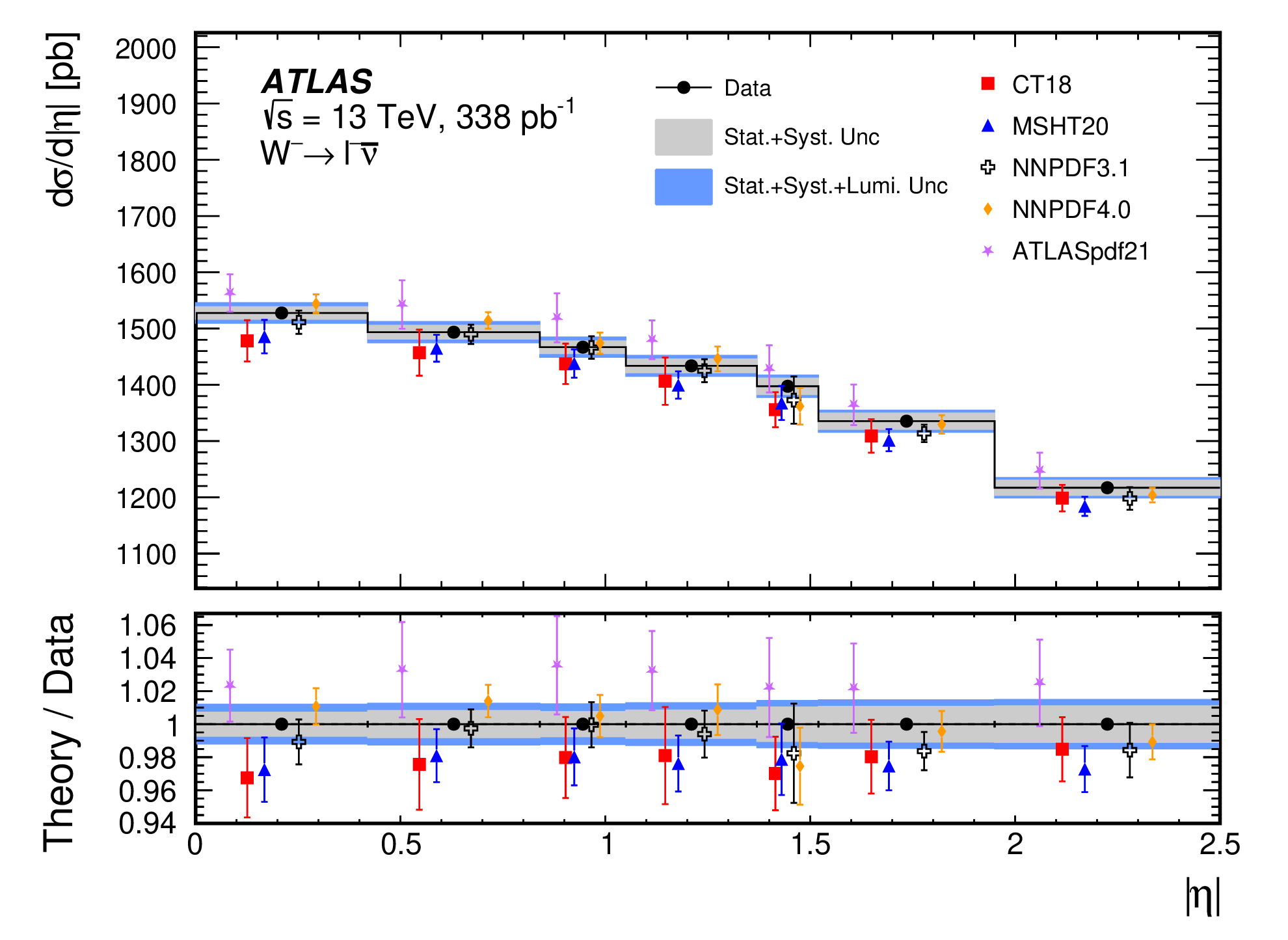
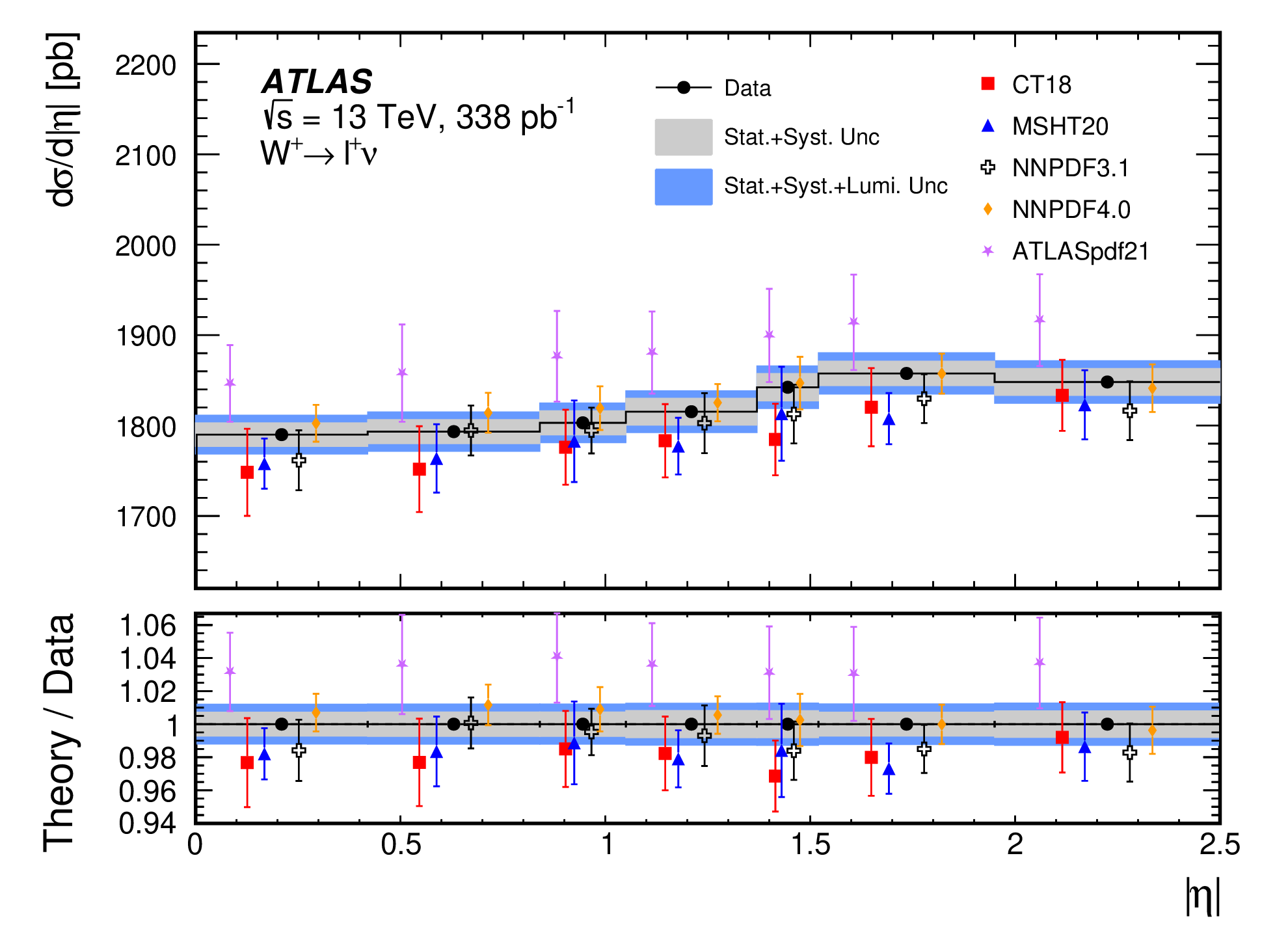
ATLAS Collab.
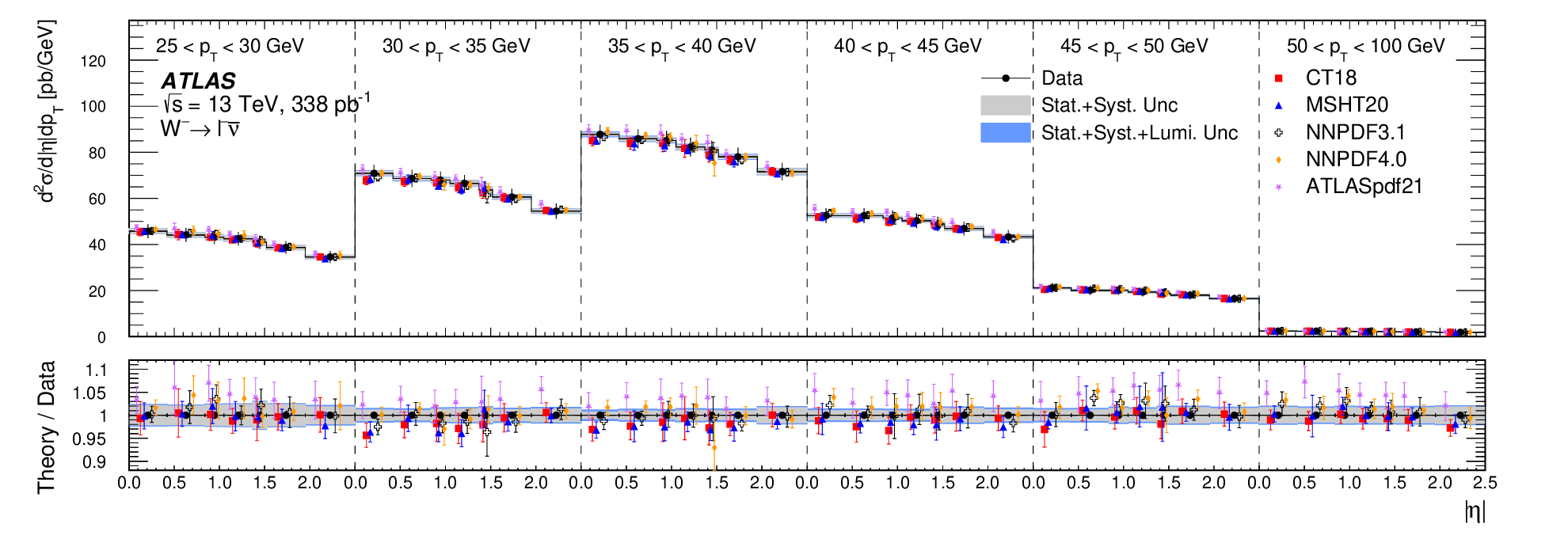
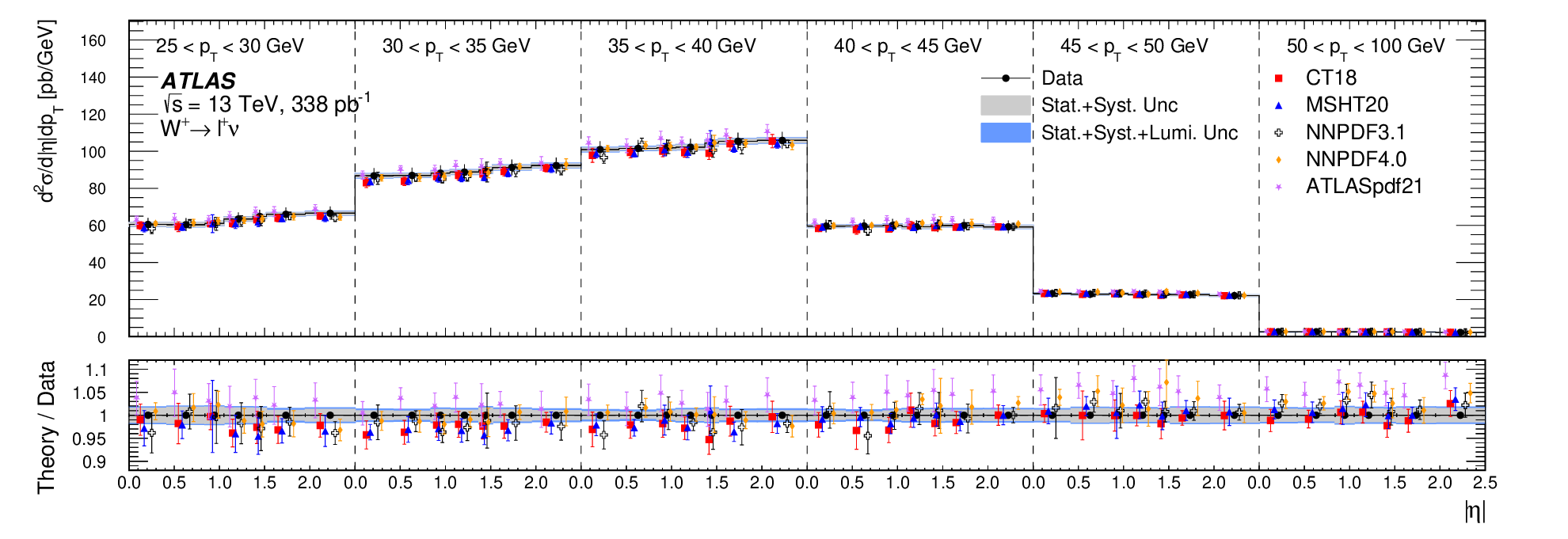
E. Coradin et al.
We study the application of a neural network architecture for identifying charged particle trajectories via unsupervised learning of delays and synaptic weights using a spike-time-dependent plasticity rule. In the considered model, the neurons receive time-encoded information on the position of particle hits in a tracking detector for a particle collider, modeled according to the geometry of the Compact Muon Solenoid Phase II detector. We show how a spiking neural network is capable of successfully identifying in a completely unsupervised way the signal left by charged particles in the presence of conspicuous noise from accidental or combinatorial hits. These results open the way to applications of neuromorphic computing to particle tracking, motivating further studies into its potential for real-time, low-power particle tracking in future high-energy physics experiments.
arXiv:2502.13047
CMS-MLG-23-005
We propose a neural network training method capable of accounting for the effects of systematic variations of the data model in the training process and describe its extension towards neural network multiclass classification. The procedure is evaluated on the realistic case of the measurement of Higgs boson production via gluon fusion and vector boson fusion in the ττ decay channel at the CMS experiment. The neural network output functions are used to infer the signal strengths for inclusive production of Higgs bosons as well as for their production via gluon fusion and vector boson fusion. We observe improvements of 12 and 16% in the uncertainty in the signal strengths for gluon and vector-boson fusion, respectively, compared with a conventional neural network training based on cross-entropy.
M. Hance, J. Robles
Many analyses in high-energy physics rely on selection thresholds (cuts) applied to detector, particle, or event properties. Initial cut values can often be guessed from physical intuition, but cut optimization, especially for multiple features, is commonly performed by hand, or skipped entirely in favor of multivariate algorithms like BDTs or classification networks. We revisit this problem, and develop a cut optimization approach based on gradient descent. Cut thresholds are learned as parameters of a network with a simple architecture, and can be tuned to achieve a target signal efficiency through the use of custom loss functions. Contractive terms in the loss can be used to ensure a smooth evolution of cuts as functions of efficiency, particle kinematics, or event features. The method is used to classify events in a search for Supersymmetry, and the performance is compared with traditional classification networks. An implementation of this approach is available in a public code repository and python package.
L. Corpe, A. Haddad, M. Goodsell
This note describes the validation of a new form of re-interpretation material provided by an ATLAS search for hadronically-decaying neutral long-lived particles in association with jets or leptons, using the full Run-2 dataset. This reference ATLAS analysis provided a set of machine-learning-based "surrogate models" which return the probability of an event being selected in a given channel of the analysis, using as input truth-level kinematic information (decay position, transverse momentum and decay products of the long-lived particles). In this document, we describe the surrogate model framework in detail, and how it responds to issues identified in other re-interpretation procedures. We describe independent validations of the surrogate models' performance in reproducing the original analysis results -- first using a standalone framework and then employing the HackAnalysis framework.
V. Ngairangbam et al.
Anomaly detection in high-energy physics is essential for identifying new physics beyond the Standard Model. Autoencoders provide a signal-agnostic approach but are limited by the topology of their latent space. This work explores topology-aware autoencoders, embedding phase-space distributions onto compact manifolds that reflect energy-momentum conservation. We construct autoencoders with spherical (Sn), product (S2⊗S2), and projective (ℝℙ2) latent spaces and compare their anomaly detection performance against conventional Euclidean embeddings. Our results show that autoencoders with topological priors significantly improve anomaly separation by preserving the global structure of the data manifold and reducing spurious reconstruction errors. Applying our approach to simulated hadronic top-quark decays, we show that latent spaces with appropriate topological constraints enhance sensitivity and robustness in detecting anomalous events. This study establishes topology-aware autoencoders as a powerful tool for unsupervised searches for new physics in particle-collision data.
V. Mikuni, B. Nachman
Machine learning has become an essential tool in jet physics. Due to their complex, high-dimensional nature, jets can be explored holistically by neural networks in ways that are not possible manually. However, innovations in all areas of jet physics are proceeding in parallel. We show that specially constructed machine learning models trained for a specific jet classification task can improve the accuracy, precision, or speed of all other jet physics tasks. This is demonstrated by training on a particular multiclass generation and classification task and then using the learned representation for different generation and classification tasks, for datasets with a different (full) detector simulation, for jets from a different collision system (pp versus ep), for generative models, for likelihood ratio estimation, and for anomaly detection. We consider, our OmniLearn approach thus as a jet-physics foundation model. It is made publicly available for use in any area where state-of-the-art precision is required for analyses involving jets and their substructure.